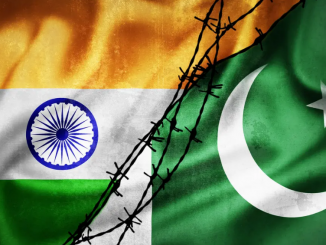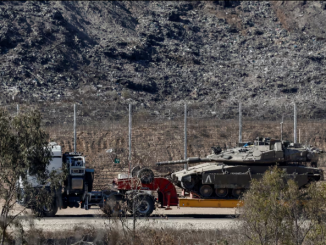
US Special Envoy to the Middle East Steve Witkoff speaks in the Oval Office of the White House on May 28, 2025, Washington. (Andrew Harnik/Getty Images/AFP)
| Published May 30, 2025
‘Framework for Negotiating an Agreement to a Permanent Ceasefire’ calls for release of 10 living Israeli hostages and remains of 18 slain captives, IDF pullback in parts of Strip
The Witkoff Proposal, introduced by U.S. Special Envoy Steve Witkoff in early 2025, aims to establish a temporary ceasefire in Gaza, facilitate the release of hostages, and provide humanitarian aid, thereby creating a conducive environment for negotiations towards a permanent resolution of the ongoing conflict.
Key Components of the Proposal
-
Ceasefire Duration: A 60-day truce, aligning with the Muslim holy month of Ramadan and the Jewish festival of Passover.
-
Hostage and Prisoner Exchange:
-
Hamas would release 10 living hostages and return the remains of 18 deceased individuals.
-
In exchange, Israel would release over 1,100 Palestinian prisoners, including 125 serving life sentences, and return 180 Palestinian bodies.
-
-
Humanitarian Aid: The proposal includes provisions for the daily entry of humanitarian aid into Gaza to alleviate the dire humanitarian situation.
Reactions from the Parties
-
Israel: The Israeli government’s reaction to the U.S.-backed Witkoff ceasefire proposal has been multifaceted, reflecting both official endorsement and internal political tensions.
Official Acceptance with Strategic Reservations
Prime Minister Benjamin Netanyahu’s office officially accepted the U.S. proposal for a temporary 60-day ceasefire during Ramadan and Passover. This plan, presented by U.S. envoy Steve Witkoff, includes the release of 10 living hostages and the return of 18 deceased individuals in exchange for over 1,100 Palestinian prisoners, alongside the daily entry of humanitarian aid into Gaza.
However, Netanyahu emphasized that this acceptance does not equate to a shift in Israel’s long-term objectives. He reiterated that there would be no permanent ceasefire until Hamas’s military and governing capabilities are dismantled and all hostages are released.
Internal Political Divisions
The proposal has exposed significant rifts within Israel’s governing coalition. Far-right ministers, including Finance Minister Bezalel Smotrich and National Security Minister Itamar Ben-Gvir, have threatened to resign if the ceasefire plan proceeds, arguing that any deal should be contingent upon the complete destruction of Hamas.
Conversely, opposition leader Yair Lapid has offered to support the government if it moves forward with the ceasefire, highlighting the complex political dynamics at play.
Conditional Flexibility
The Israeli government has indicated a willingness to engage in further negotiations if Hamas agrees to the initial terms of the ceasefire. The plan allows Israel to resume military operations after 42 days if talks toward a permanent ceasefire do not progress.
This stance reflects Israel’s strategic approach: utilizing the temporary ceasefire to secure the release of hostages and provide humanitarian relief, while maintaining pressure on Hamas to meet broader security demands.
-
Hamas: Hamas has expressed strong reservations about the U.S.-backed ceasefire proposal, labeling it as a “continuation of killing” in Gaza. This characterization stems from several core concerns that the group believes the proposal fails to address.
Key Concerns Raised by Hamas
-
Absence of a Permanent Ceasefire: Hamas criticizes the proposal for lacking a commitment to a permanent cessation of hostilities. They argue that without a definitive end to the conflict, the temporary truce merely postpones further violence, allowing Israel to regroup and potentially resume military operations after the 60-day period.
-
No Guarantee of Israeli Withdrawal: The group demands a full withdrawal of Israeli forces from Gaza. The current proposal does not stipulate such a withdrawal, leading Hamas to believe that the occupation and associated military actions would persist, undermining the prospects for lasting peace.
-
Humanitarian Crisis Unaddressed: Hamas points out that the proposal does not adequately tackle the severe humanitarian situation in Gaza. They highlight ongoing issues such as famine, restricted access to essential supplies, and the destruction of infrastructure, which continue to afflict the civilian population.
-
Perception of U.S. Bias: Hamas accuses the United States of favoring Israeli interests, suggesting that the proposal serves to “buy time” for Israel to continue its military objectives under the guise of a temporary ceasefire. They argue that this bias undermines the credibility of the U.S. as a neutral mediator in the conflict.
-
The implications of Israel accepting the Witkoff ceasefire proposal can be interpreted as both strategically necessary and potentially dangerous, depending on priorities like national security, deterrence, and geopolitical strength.
1. Strategic Pause, Not Capitulation
We may view the ceasefire as a temporary tactical move, not a compromise on the ultimate goal of dismantling Hamas. Accepting the deal could be seen as a way to:
-
Retrieve Israeli hostages without yielding on key military objectives.
-
Gain international legitimacy and reduce pressure from allies like the U.S.
-
Re-arm and regroup the IDF if military operations need to resume.
2. Risk of Undermining Deterrence
However, critics on the right may argue that halting military operations even temporarily:
-
Signals weakness to enemies like Hamas, Hezbollah, and Iran.
-
Could allow Hamas time to regroup, rearm, and strengthen tunnel infrastructure.
-
Undermines Israel’s strategic deterrent, especially after gains made in Gaza.
3. Political Ramifications
Internally, conservatives are deeply divided:
-
Far-right ministers like Ben-Gvir and Smotrich see any negotiation as a betrayal of national strength and have threatened to collapse the coalition.
-
They fear this deal will snowball into international pressure for a broader peace process that could include concessions on territory or statehood.
4. U.S. Involvement Viewed Warily
From a conservative stance, the strong role of the U.S. — especially under a Democratic administration — raises concerns:
-
The perception is that American diplomats are more interested in regional calm than Israel’s security.
-
Conservatives may view U.S. involvement as meddling or as biased toward appeasing Palestinian factions for broader geopolitical optics.
5. Moral Justification for Continued War
A core conservative argument remains: Israel has the moral and strategic obligation to finish what it started — namely, the dismantling of Hamas — and anything less is unjust to Israeli victims and risky for future generations.
Overall Takeaway:
The Witkoff ceasefire proposal is a double-edged sword — a necessary short-term maneuver to recover hostages and reduce global pressure, but also a potential threat to Israel’s long-term security goals if it leads to premature de-escalation or international interference.
Conservatives are likely to support the deal only if:
-
It does not halt the mission to dismantle Hamas.
-
Israel retains the right to resume military operations.
-
There are no further concessions under international pressure.
The broader concern is that humanitarian optics or U.S.-led diplomacy could water down Israeli objectives, reward terror tactics, and ultimately embolden enemies.
SOURCES: THE TIMES OF ISRAEL – Full text of Witkoff’s proposal for 60-day Gaza ceasefire and hostage release deal
AP NEWS – Israel accepts a US proposal for a temporary Gaza ceasefire and Hamas gives a cool response
THE NEW YORK POST – US presents Israel-approved cease-fire deal to Hamas — but terror group says it doesn’t meet its demands





Be the first to comment